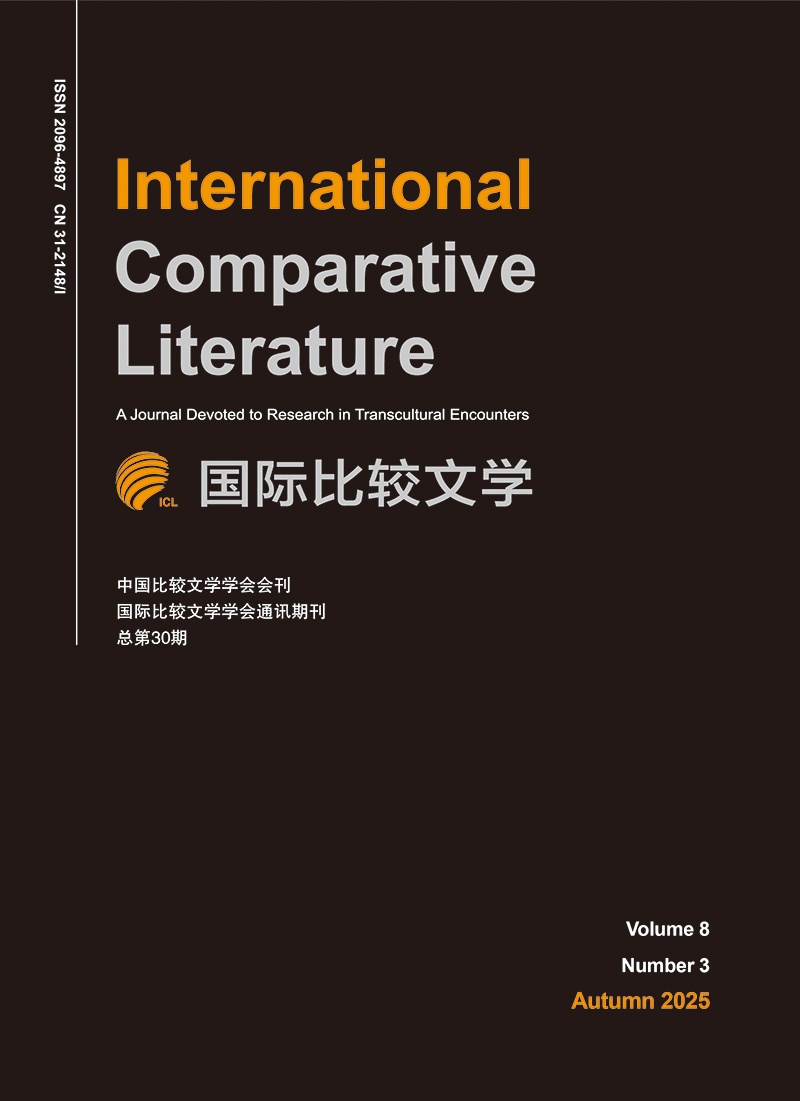|
[1]
|
阿布-卢格霍德:《欧洲霸权之前:1250-1350年的世界体系》,杜宪兵、何美兰、武逸天译,北京:商务印书馆,2015年。
|
|
[2]
|
[Abu-Lughod. Before European Hegemony:The World System in 1250-1350. Translated by DU Xianbing, HE Meilan and WU Yitian. Beijing:Commercial Press, 2015.]
|
|
[3]
|
本尼迪克特·安德森:《想象的共同体》,吴瑞人译,上海:上海人民出版,2005年,2016年。
|
|
[4]
|
[Anderson, Benedict. Imagined Communities. Translated by WU Ruiren. Shanghai:Shanghai People's Publishing House, 2005, 2016.]
|
|
[5]
|
弗朗索瓦·吉普鲁:《亚洲的地中海:13-21世纪中国、日本、东南亚商埠与贸易圈》,龚华燕、龙雪飞译,香港:新世纪出版社,2014年。
|
|
[6]
|
[Gipouloux, François. The Asian Mediterranean:Port Cities and Trading Networks in China, Japan, and Southeast Asia, 13th-21st Century. Translated by GONG Huayan and LONG Xue fei. Hong Kong:New Century Press, 2014.]
|
|
[7]
|
柄谷行人:《走向世界共和国》,东京:岩波书店,2006年。
|
|
[8]
|
[Karatani Kojin. Towards a World Republic. Tokyo:Iwanami Shoten,2006.]
|
|
[9]
|
——:《日本近代文学的起源》,赵京华译,上海:三联书店,2003年。
|
|
[10]
|
[.——The Origin of Modern Japanese Literature. Translated by ZHAO Jinghua. Shanghai:SDX Joint Publishing Company, 2003.]
|
|
[11]
|
——:《世界史的构造》,赵京华译,北京:中央编译出版社,2012年。
|
|
[12]
|
[——. The Structure of World History. Translated by ZHAO Jinghua. Beijing:Central Compilation and Translation Press, 2012.]
|
|
[13]
|
——:《民族与美学》,薛羽译,西安:西北大学出版社,2016年。
|
|
[14]
|
[——. Nationality and Aesthetics. Translated by XUE Yu. Xi'an:Northwest University Press, 2016.]
|
|
[15]
|
麦克尼尔:《西方的兴起》,孙岳、陈志坚、于展、等译,北京:中信出版社,2015年。
|
|
[16]
|
[McNeill. The Rise of the West. Translated by SUN Yue, CHEN Zhijian, YU Zhan et al.. Beijing:China Citic Press, 2015.]
|
|
[17]
|
彭慕兰:《大分流-欧洲、中国即现代世界经济的发展》,史建云译,南京:江苏人民出版社,2010年。
|
|
[18]
|
[Pomeranz. The Great Divergence:China, Europe and the Making of the Modern World Economy. Translated by SHI Jianyun. Nanjing:Jiangsu People's Publishing House, 2010.]
|
|
[19]
|
安东尼·瑞德:《东南亚贸易时代1450-1680》第二卷,孙来臣、李塔娜、吴小安译,北京:商务印书馆,2013年。
|
|
[20]
|
[Reed, Anthony. Southeast Asia in the Age of Commerce 1450-1680. Vol.2. Translated by SUN Laichen, LI Tana and WU Xiao'an. Beijing:The Commercial Press, 2013.]
|
|
[21]
|
沃勒斯坦:《现代世界体系》第1卷,郭方、刘新成、章文刚译,北京:社会科学文献出版社,2013年。
|
|
[22]
|
[Wallerstein. The Modern World-System. Vol.1. Translated by GUO Fang, LIU Xincheng, ZHANG Wengang.Beijing:Social Sciences Academic Press, 2013.]
|
|
[23]
|
——:《现代世界体系》第2卷,郭方、吴必康、钟伟云译,北京:社会科学文献出版社,2013年。
|
|
[24]
|
[——. The Modern World-System. Vol.2. Translated by GUO Fang,WU Bikang and ZHONG Weiyun. Beijing:Social Sciences Academic Press, 2013.]
|
|
[25]
|
谢立中、孙立平编:《二十世纪西方现代化理论文选》,上海:上海三联书店,2002年。
|
|
[26]
|
[XIE Lizhong, SUN Liping, eds. Anthology of Western Modernization Theory in the Twentieth Century. Shanghai:SDX Joint Publishing Company, 2002.]
|

 点击查看大图
点击查看大图



 下载:
下载:

